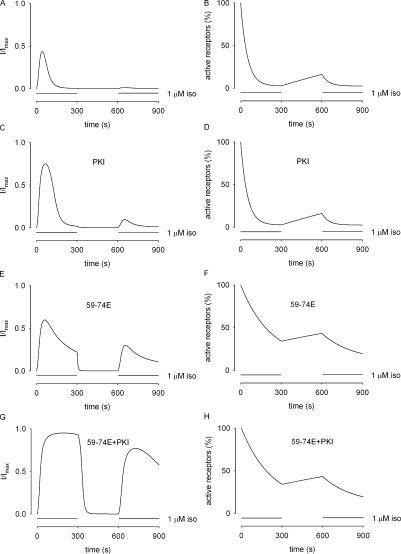Figure 7.
Simulations of the recovery of isoproterenol-induced signals following a 5-min stimulation and a 5-min washout (the two-pulse protocol). The simulations depict the response of the system to an initial 5-min exposure to 1 μM isoproterenol, followed by a 5-min wash, and then a second exposure to 1 μM isoproterenol. Under control conditions (A), and in the presence of 20 nM PKI (C), only small currents are induced by a second exposure to isoproterenol. (B and D) This was primarily due to a reduction in the number of active receptors. (E and F) Inhibition of GRK activity with 3 μM 59-74E allows a second isoproterenol response that is substantially larger (∼50% of the peak response to the initial pulse) due to an increased number of receptors at the start of the second pulse. (G and H) In the presence of both PKI and 59-74E, the cAMP response was further increased, due to the increased number of receptors at the start of the second pulse, and the loss of PKA-mediated regulation of PDE activity. These simulations are consistent with the data presented in Fig. 4.

